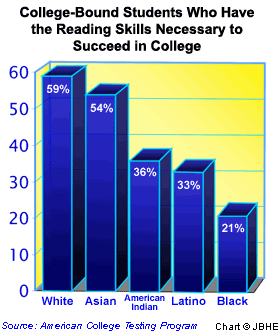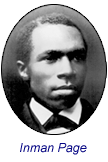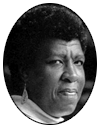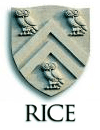High-Ranking Institutions With Low Black Student Graduation Rates
In last week’s edition of the JBHE Weekly Bulletin we identified the colleges and universities that have the highest black student graduation rates. Harvard, Amherst, Princeton, and Wellesley turned in the highest graduation rates for black students.
But the graduation rates for black students at several high-ranking institutions severely lag those of black students at peer institutions. Among the nation’s colleges that are prestigious and commonly rated as highly selective, the lowest black student graduation rate occurs at Bates College in Maine. Only 64 percent of the black freshmen who enroll at Bates College go on to graduate. Among the high-ranking universities, the lowest black student graduation rate is at Carnegie Mellon University in Pittsburgh. But the number of black students at Carnegie Mellon is not large. Moreover, the curriculum at Carnegie Mellon is heavily directed toward science. This may be a factor in the relatively low graduation rate of black students at Carnegie Mellon.
 Far more disturbing is the poor black student graduation rate at the academically selective University of Michigan. This is a huge state university of 40,000 students. And performance there is often viewed as a national bellwether. Currently, only 67 percent of entering students at the University of Michigan go on to graduate. At the moment there are nearly 1,900 black students at the University of Michigan, the largest black enrollment of any high-ranking college or university. If these black students graduate at the same rate as their peers in the recent past, more than 600 of them will fail to earn their bachelor’s degree. Far more disturbing is the poor black student graduation rate at the academically selective University of Michigan. This is a huge state university of 40,000 students. And performance there is often viewed as a national bellwether. Currently, only 67 percent of entering students at the University of Michigan go on to graduate. At the moment there are nearly 1,900 black students at the University of Michigan, the largest black enrollment of any high-ranking college or university. If these black students graduate at the same rate as their peers in the recent past, more than 600 of them will fail to earn their bachelor’s degree.
As for the nation’s other high-ranked institutions, only three other schools have a black student graduation rate below 70 percent. They are the University of North Carolina at Chapel Hill, Colby College, and Carleton College.
Many College-Bound Blacks Lack the Reading Skills Needed to Succeed in Higher Education
A new report prepared by the American College Testing Program finds that only half of all high school graduates who took the ACT college entrance examination in 2005 showed the reading skills necessary to succeed in college. In analyzing results of reading comprehensive questions of the ACT test, researchers developed a benchmark which identifies students who “are likely ready to handle the reading requirements for a typical credit-bearing first-year college social science course.”
For blacks who took the ACT test, only 21 percent had the reading skills they will need in college. This is less than one half the rate for whites.

It is important to note that these results are only for black students who took the ACT test and who therefore in all probability were planning to enroll in college.
  |
“They are attempting to be respectable and appear to be intelligent. The truth is, they are nothing but lowdown Nazis.”
— David Benzaquen, a Washington, D.C., college student, protesting outside the hotel hosting the American Renaissance conference of academic racialists in McLean, Virginia, in The Washington Post, 2-26-06 (See item in righthand column).
|
Will a Black Woman Become Harvard’s Next President?
After Lawrence Summers announced he was stepping down as president of Harvard University, many observers of the academic world have speculated that Harvard, for the first time in its history, will select a woman as its new president. Among the names considered as possible candidates for Harvard’s president are Nannerl O. Keohane, former president of Duke University, Donna E. Shalala, president of the University of Miami, Shirley M. Tilghman, president of Princeton University, and Amy Gutmann, president of the University of Pennsylvania.
Also mentioned as possible successors to Summers are several black women including Ruth Simmons, president of Brown University, Shirley Ann Jackson, president of Rensselaer Polytechnic Institute, and Condoleezza Rice, the current secretary of state who previously served as provost at Stanford University.
Recently, The New York Sun, a conservative and widely admired newspaper, recommended Condoleezza Rice as the next president of Harvard University.
Blacks Are Frequently Elected Student Body President at the Nation’s Highest-Ranked Universities
Ordinarily, few whites vote for blacks. Consider that all black members of the U.S. House of Representatives come from districts in which black voters hold the balance of voting power.
But African Americans are quite commonly elected student body presidents at the nation’s highest-ranked universities, all of which are predominantly white. In fact, a recent JBHE survey finds that blacks have served as student body president at 25 of the nation’s 28 highest-ranked universities. Over the past 130 years, at least 88 blacks have served as head of the student government at these schools.
 Duke, the University of Virginia, and the University of California at Los Angeles have had at least eight blacks elected to head the student body. There have been five black student body presidents at Brown, Northwestern, Columbia, Princeton, Tufts, the University of California at Berkeley, and the University of North Carolina at Chapel Hill. Duke, the University of Virginia, and the University of California at Los Angeles have had at least eight blacks elected to head the student body. There have been five black student body presidents at Brown, Northwestern, Columbia, Princeton, Tufts, the University of California at Berkeley, and the University of North Carolina at Chapel Hill.
The first African American to be elected student body president at a high-ranking university was Inman Page at Brown University in 1877. Overall, 10 blacks were elected to lead the student government at the high-ranking universities during the 1970s. Eleven were elected in the 1980s. Forty black student body presidents served in the 1990s and 21 blacks have been elected student body president in this decade. Blacks are currently serving as student body president at the University of Chicago, Princeton University, Wake Forest University, Columbia University, and the University of Virginia.
As far as JBHE can determine, no black student has served as student body president at CalTech, Carnegie Mellon, Johns Hopkins, or Yale.
 Langston University Settles Race Discrimination Complaint Filed by a White Professor Langston University Settles Race Discrimination Complaint Filed by a White Professor
Langston University, the historically black college in Oklahoma, entered into a consent decree with the U.S. Department of Justice in a race discrimination case filed by a white professor of English. The professor claimed that her salary was lower than that of black professors in the same position and that black faculty members were given preferential treatment. Under the agreement, the professor will have her salary increased and be awarded $30,000 in back pay. The university also agreed to implement training courses on racial discrimination law for all administrators.
Dartmouth College

Office of Public Affairs
Dartmouth College seeks a Public Affairs Officer with experience in writing and public relations for its periodicals programs in the Office of Public Affairs. The position entails a range of general communications, writing and public relations assignments. Primary responsibilities will include writing articles for and providing assistance with the production of a variety of news and features periodicals, and identifying news and feature stories that advance the institution's strategic goals. Successful candidates will possess excellent news and feature writing abilities; skill in developing and maintaining relationships with faculty, students, administrators, and alumni; excellent fact-checking skills; and a commitment to accuracy. They will be able to meet multiple deadlines and prioritize work to successfully serve the needs of numerous periodicals and communications vehicles.
Requirements include three to five years of experience in academic communications, periodicals or related fields, a bachelor's degree, excellent writing and editorial skills, and ability to work in a team environment focused on developing and communicating strategic themes and messages. Some media relations experience is recommended.
One of the most diverse institutions of higher education in New England, Dartmouth College is an equal opportunity/affirmative action employer and has a strong commitment to diversity. In that spirit, we are particularly interested in receiving applications from a broad spectrum of people, including women, persons of color, persons with disabilities, and veterans.
PLEASE MAIL COVER LETTER AND RESUME TO:
Diana Forbes
Dartmouth College Office of Public Affairs
7 Lebanon Street, Suite 201
Hanover, NH 03755
COVER LETTERS AND RESUMES WILL ALSO BE ACCEPTED VIA EMAIL AND SHOULD BE SENT TO: diana.forbes@dartmouth.edu
Advanced Placement Test Where Blacks Achieved the Most Success
Previously JBHE reported that 27.8 percent of all black test takers received a grade of 3 or above on Advanced Placement tests in 2005. A score of 3 or above is required for consideration for college credit. But blacks did considerably better on some AP tests.
The AP course in which blacks achieved the most success was studio art, 2-D design. In this course 64 percent of black students received a qualifying grade of 3 or above. On the studio art drawing AP test, 59.4 percent of black students received a qualifying grade. This is the only AP course where there is no examination. Students are graded by an assessment of their drawing portfolios. More than one half of all black students who took AP tests in Spanish literature, German, and French received a grade of 3 or above. Particularly good news is the fact that 53.1 percent of all blacks taking one of the two calculus tests received a qualifying grade.
At the other end of the spectrum, only 326 of the 1,847 black students, or 17.7 percent, who took the AP environmental science test received a qualifying score of 3 or above. Less than 26 percent of all black students succeeded in qualifying for college credit in the subject areas of U.S. government and politics, physics, chemistry, computer science, English literature, and statistics.
Candidates for President of the Southern University System
The board of supervisors of the Southern University system is currently interviewing candidates to replace retiring president Leon Tarver. Among the candidates for the position are:
• Lester Newman, president of Mississippi Valley State University, a historically black educational institution in Itta Bena;
• Ralph Slaughter, vice president for administration and management for the Southern University system;
• William McHenry, professor of chemistry and an administrator at Jackson State University in Mississippi; and
• A. Toy Caldwell-Colbert, former provost at Howard University, who now serves as president of the Society for the Psychological Study of Ethnic Minority Issues at the American Psychological Association.
In Memoriam
Octavia Butler (1947-2006)
Octavia Butler, the award-winning science fiction author, died in late February after a fall and an apparent stroke outside her home in Seattle, Washington. She was 58 years old.
 Butler was born in Pasadena, California, the daughter of a shoeshine man and household maid. She grew up on her grandmother’s chicken farm which had no electricity or running water. Unusually tall for a young girl, Butler had trouble fitting in and establishing friendships. As a result, she immersed herself in a world of books and writing. By age 10 she was writing original stories, ignoring her aunt’s advice that, “Honey, Negroes can’t be writers.” Butler was born in Pasadena, California, the daughter of a shoeshine man and household maid. She grew up on her grandmother’s chicken farm which had no electricity or running water. Unusually tall for a young girl, Butler had trouble fitting in and establishing friendships. As a result, she immersed herself in a world of books and writing. By age 10 she was writing original stories, ignoring her aunt’s advice that, “Honey, Negroes can’t be writers.”
At the age of 18 Butler was accepted into a screenwriting program headed by science fiction legend Harlan Ellison. She wrote short stories and worked as a telemarketer to pay her bills. In the 1970s, science fiction publishers did not see a market for their books in the African-American community. As a result, the cover artwork on Butler’s early science fiction novels showed white people or aliens from outer space rather than the black characters who were the main protagonists of her novels.
Then, in 1979, she published the novel Kindred, the story of a twentieth century African-American woman who traveled back in time to meet her great-great-grandfather who was a white slave owner. Butler became a sensation in the science fiction genre. She won a MacArthur Foundation genius award, which enabled her to write without having to worry about her finances. By 1995 she had published 10 novels and won the prestigious Nebula and Hugo awards, the most esteemed prizes in science fiction.
Butler suffered from congestive heart disease requiring extensive medication. Therefore, she was unable to keep up with a rigorous writing schedule. Her final novel, and first in seven years, was published this past November. Fledgling told the tale of a 50-year-old vampire who appeared to be a 10-year-old black girl.
Mabel M. Smythe-Haith (1918-2006)
Mabel M. Smythe-Haith, former college professor, assistant secretary of state for African affairs and U.S. ambassador to Cameroon and Equatorial Guinea, died in February at her home in Tuscaloosa, Alabama. She was 87 years old and suffered from Alzheimer’s disease.
A native of Montgomery, Alabama, Smythe-Haith attended Spelman College. She left school to marry and completed her bachelor’s degree at Mount Holyoke College in Massachusetts. She later received a master’s degree in economics from Northwestern and a Ph.D. in economics and law from the University of Wisconsin. Early in her career she taught at Lincoln University in Missouri, Tennessee State University, and Brooklyn College. In the 1950s she taught at Shiga University in Japan.
President Jimmy Carter named her an ambassador in 1977 and assistant secretary of state in 1980. She later served as scholar-in-residence for the U.S. Commission on Civil Rights and served on the board of the Phelps Stokes Fund, the Washington-based nonprofit association seeking to enhance educational opportunities for blacks and other minorities.
|
The Gender Gap Among Black Students at the Nation’s Highest-Ranked Universities
 The latest Department of Education figures reveal that black women account for 63.6 percent of all African-American undergraduate enrollments in the United States. JBHE recently surveyed the nation’s highest-ranked universities to determine if the gender gap in African-American higher education was wider or narrower at these institutions than in the nation as a whole. The latest Department of Education figures reveal that black women account for 63.6 percent of all African-American undergraduate enrollments in the United States. JBHE recently surveyed the nation’s highest-ranked universities to determine if the gender gap in African-American higher education was wider or narrower at these institutions than in the nation as a whole.
The JBHE survey found that at 23 of the 26 institutions that responded to our survey, there were more black women enrolled than black men. Only at the University of Notre Dame, the Massachusetts Institute of Technology, and the California Institute of Technology did black men outnumber black women.
Black women make up 71.7 percent of all African-American enrollments at Emory University in Atlanta. This is the largest black gender gap among the 26 universities in our survey. Black women are 68.1 percent of the African-American enrollments at the University of North Carolina at Chapel Hill. At Berkeley, Northwestern, and Cornell, black women make up a larger percentage of the total African-American enrollments than the national average, which as stated earlier is 63.6 percent.
But at the vast majority of high-ranking universities, the black student gender gap is below the national average. In all probability the explanation is that these institutions are highly selective in their admissions policies. Thus these universities have great leeway in molding their student bodies to create racial, ethnic, and gender diversity.
David Duke Joins Gathering of Academic Racialists in Virginia

Jared Taylor
Recently about 250 people, mostly white men, gathered for the biennial American Renaissance conference at the Hyatt Hotel in McLean, Virginia. The conference, sponsored by the New Century Foundation, featured speakers who are among the world’s most renowned academic racialists. They include Andrew Fraser, J. Philippe Rushton, Jared Taylor, and Sam Dickinson. David Duke, former grand wizard of the Ku Klux Klan and founder of the National Association for the Advancement of White People, was an attendee at the event but did not speak. All conference attendees were required to wear jackets and ties to all events.
When Jared Taylor, organizer of the conference and a graduate of Yale University, was asked by a reporter if his group was a white supremacist organization, he responded, “If anything, we’re yellow supremacists because the IQ data, the general social dysfunction data, suggests that Asians are superior to whites.”
Dozens of protesters gathered outside the hotel, shouting, “Change your name, You’re still the KKK.”
Texas Tech Adopts Race-Sensitive Admissions Program
 In 1996, as a result of the federal appeals court ruling in the Hopwood case, state-operated universities in Texas were prohibited for seven years from considering the race of an applicant in their admissions decisions. The 2003 Grutter decision by the U.S. Supreme Court overturned the Hopwood ruling and enabled public universities in Texas to once again consider race. In 1996, as a result of the federal appeals court ruling in the Hopwood case, state-operated universities in Texas were prohibited for seven years from considering the race of an applicant in their admissions decisions. The 2003 Grutter decision by the U.S. Supreme Court overturned the Hopwood ruling and enabled public universities in Texas to once again consider race.
The University of Texas at Austin quickly declared that race could and would be considered in the admissions decision. The Texas A&M University system decided to stay with race-neutral admissions but placed an increased effort on outreach programs to increase racial diversity on campus.
Texas Tech University also maintained its race-neutral admissions system. But last year only 42 percent of blacks who applied to the university were admitted compared to 76 percent of whites. As a result, this spring Texas Tech will now consider race as a positive factor in admissions decisions. Race will be just one factor in a new admissions category called “Diversity of Experience.” Students who have overcome obstacles, become proficient in another language, or were active participants in community service may also be given an advantage in what Texas Tech calls an “individualistic and holistic” admissions process.
Chaka Fattah: The Congressman Who Focuses on Higher Education Opportunity For African Americans
For the past 20 years, African-American Congressman Chaka Fattah of Philadelphia has hosted the Fattah Conference on Higher Education. The three-day event features workshops and lectures to help black and other minority students prepare for college.
 At this year’s conference, Fattah invited 700 black and other minority college students from Pennsylvania to attend the conference as his guests. At a banquet in the hotel’s ballroom, Fattah announced that all 700 students were eligible for free graduate tuition scholarships at 17 participating universities. Any of the 700 students who apply to and are accepted at any of the 17 universities’ graduate programs would receive full tuition scholarships. If all the students join the program, the scholarships could be worth as much as $25 million. At this year’s conference, Fattah invited 700 black and other minority college students from Pennsylvania to attend the conference as his guests. At a banquet in the hotel’s ballroom, Fattah announced that all 700 students were eligible for free graduate tuition scholarships at 17 participating universities. Any of the 700 students who apply to and are accepted at any of the 17 universities’ graduate programs would receive full tuition scholarships. If all the students join the program, the scholarships could be worth as much as $25 million.
The scholarship money is provided by the universities in conjunction with the State System of Higher Education and the Educational Advancement Alliance, a Philadelphia-based nonprofit organization seeking greater educational opportunities for minority students. Universities participating in the program are Drexel, Temple, the University of the Sciences, and the 14 institutions in the Pennsylvania state system.
Number of Blacks Accepted to Rice University Up 35 Percent
 Last month JBHE reported that black applicants to Rice University’s interim decision admissions program were up a whopping 38 percent from a year ago. Under this program, students apply by December and are informed of the university’s decision in February. The interim admissions application is not binding, which means that students who apply under the program are not required to enroll at Rice if they are accepted. Last month JBHE reported that black applicants to Rice University’s interim decision admissions program were up a whopping 38 percent from a year ago. Under this program, students apply by December and are informed of the university’s decision in February. The interim admissions application is not binding, which means that students who apply under the program are not required to enroll at Rice if they are accepted.
Now the results are in. In 2006, 54 black students were admitted to Rice under the interim decision program. This was an increase of 35 percent from a year ago. Some 28 percent of all black applicants in the interim admissions program were accepted, the same rate as for interim applicants as a whole. Blacks made up 5.8 percent of all students accepted under the interim decision program this year.
The original 1912 charter of Rice University stipulated that only white students were permitted to enroll.
New Scholarly Center on Racial Issues Opens at UCLA
 The Center for the Study of Race, Ethnicity, and Politics at the University of California at Los Angeles had its official opening recently with a lecture on racial politics in Brazil by Professor Michael Hanchard of Northwestern University. The Center for the Study of Race, Ethnicity, and Politics at the University of California at Los Angeles had its official opening recently with a lecture on racial politics in Brazil by Professor Michael Hanchard of Northwestern University.
Mark Q. Sawyer, an associate professor of political science at UCLA, is the center’s first director. “The center will move the understanding of race in the United States — with its constantly changing ethnic makeup — beyond the black/white paradigm,” Sawyer says. “It will also push the study of race beyond the boundaries of the United States and into an international and comparative context.”
Sawyer is a graduate of the University of Illinois and holds a master’s degree and Ph.D. in political science from the University of Chicago. He is the author of the new book Racial Politics in Post-Revolutionary Cuba.
  |
624,000 Number of living black Americans who held a graduate or professional degree in 1994.
1,100,000 Number of living black Americans who held a graduate or professional degree in 2004.
source: U.S. Bureau of the Census
|
The Gender Gap in Black Dental School Enrollments
In recent issues we have reported the persistence of racial segregation in U.S. dental school education. There is a final note on black dental students that must be noted. Nationwide, men of all races make up a vast majority of all dental school students. In 2004 only 37.9 percent of all white dental school students were women. But as is the case in most areas of African-American higher education, black women are a larger proportion of dental school enrollments than are black men.
Today more than three fifths of all black dental school students are women. Since 1995 the percentage of all black dental school students who are women has increased from 57.2 percent to 61.6 percent.
Grambling State University to End Open Admissions Policy
 The board of supervisors of the state university system in Louisiana wants to increase the academic standing of its public colleges and universities. As a result, Grambling State University, the historically black institution in Grambling, Louisiana, will end its open admissions policy. Beginning in 2007 Grambling will gradually phase in admissions standards for incoming students. The board of supervisors of the state university system in Louisiana wants to increase the academic standing of its public colleges and universities. As a result, Grambling State University, the historically black institution in Grambling, Louisiana, will end its open admissions policy. Beginning in 2007 Grambling will gradually phase in admissions standards for incoming students.
By 2010, when the admissions standards will fully be in place, incoming students will be required to have maintained a minimum 2.0 grade point average in high school and achieved a score of 20 on the American College Testing Program’s ACT college entrance examination. Currently the median score of black students on the ACT test is 17 on a scale of 1 to 36.
Increasing the Black Presence in the Environmental Sciences
Black students are vastly underrepresented in fields such as mathematics, the natural sciences, computer science, and engineering. But one field where blacks are even more scarce is environmental science. Data on bachelor’s degree recipients show that there is one black student among every 200 graduates in the field. In a number of fields involving environmental sciences, in most years there are no Ph.D. awards to blacks.
 But one historically black university is mounting a major effort to increase the number of black students in the field. Central State University in Wilberforce, Ohio, operates the International Center for Water Resources Management. About 55 black students are enrolled in its water resource management degree program. The center, with its highly sophisticated hydrology and hydraulics laboratories, participates in several federally funded research projects. These federal funds have permitted the center to keep operating despite a reduction in state funds due to the financial problems that have plagued Central State in recent years. But one historically black university is mounting a major effort to increase the number of black students in the field. Central State University in Wilberforce, Ohio, operates the International Center for Water Resources Management. About 55 black students are enrolled in its water resource management degree program. The center, with its highly sophisticated hydrology and hydraulics laboratories, participates in several federally funded research projects. These federal funds have permitted the center to keep operating despite a reduction in state funds due to the financial problems that have plagued Central State in recent years.
Appointments
 • Ann E. Penn was named equal employment opportunity/American With Disabilities Act officer at the University of North Carolina at Chapel Hill. She was the director of the office of Equal Employment Opportunity and Affirmative Action at Kent State University in Ohio. • Ann E. Penn was named equal employment opportunity/American With Disabilities Act officer at the University of North Carolina at Chapel Hill. She was the director of the office of Equal Employment Opportunity and Affirmative Action at Kent State University in Ohio.
Penn is a graduate of Myers University in Cleveland and holds a master’s degree in psychology from Cleveland State University.
 • Daniel Rutherford Wilson was appointed director of alumni affairs at Hampton University in Virginia. He was the director of policy development and special assistant to the president of the National Caucus and Center on Black Aged. A 1999 graduate of Hampton, Wilson had been serving as the head of the Washington, D.C., chapter of the university’s alumni association. • Daniel Rutherford Wilson was appointed director of alumni affairs at Hampton University in Virginia. He was the director of policy development and special assistant to the president of the National Caucus and Center on Black Aged. A 1999 graduate of Hampton, Wilson had been serving as the head of the Washington, D.C., chapter of the university’s alumni association.
Grants
• Tuskegee University, the historically black educational institution in Alabama, received a two-year, $1 million grant from the 3M Corporation for use in the construction of the new home of the College of Business and Information Science. The building will be named in honor of former Federal Reserve Board governor Andrew F. Brimmer.
• Prairie View A&M University, the historically black institution in Texas, received a $335,440 grant from the National Aeronautics and Space Administration for a research study of the space surrounding various bodies in the solar system including Earth’s upper atmosphere, the ionosphere, and the magnetosphere.
The University of Maine

Executive Director of Equal Opportunity and Diversity
The University of Maine seeks applications and nominations for Executive Director of Equal Opportunity and Diversity. The Executive Director, who reports to the President and is a member of the Management Group, is responsible for monitoring and advocating for the University’s commitment to equal opportunity and affirmative action; for compliance with nondiscrimination laws, guidelines and policies; and for coordinating the University’s efforts to create and sustain a diverse, inclusive community. This individual serves as the university’s Title IX and ADA Coordinator. Specific responsibilities are outlined in the job description available at: www.umaine.edu/hr/jobs.
Applicant should have a graduate degree or demonstrate, in a field related to this position, equivalent professional experience. Previous experience managing diversity efforts and/or diversity educational programs is required, as is previous success in complaint investigation and alternative dispute resolution. Excellent and demonstrated communication skills and an understanding of relevant laws and regulations are essential. Candidates must demonstrate the ability to work collaboratively with sensitivity and tact, and be sensitive to the dynamics of differences in race, gender, disability, religion, sexual orientation, national origin, and other bases for cultural difference. Candidates with work experience in a higher education setting will be given preference.
Compensation depends on qualifications and experience. The University of Maine, the flagship in the state’s public university system, offers an excellent benefits package. The university is located within an hour of Maine’s beautiful coast and two hours from western mountain ski resorts. The campus offers a broad array of undergraduate and graduate programs for 11,500 students and employs 2500 faculty and staff.
Review of applications begins March 28, 2006 and will continue until the position is filled. Please send a letter of application outlining interest and qualifications, a resume, and contact information for four professional references to:
Executive Director of Equal Opportunity and Diversity Search
University of Maine
c/o President’s Office
200 Alumni Hall
Orono, ME 04469
The University of Maine is an Equal Opportunity/Affirmative Action employer and welcomes applications from underrepresented groups.
|

